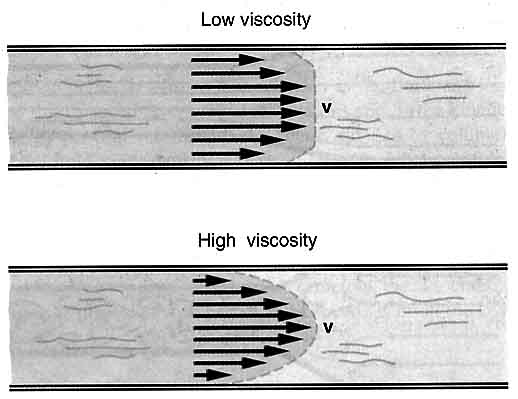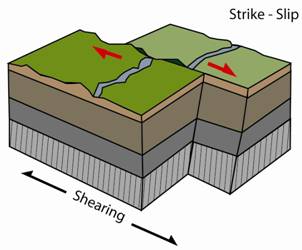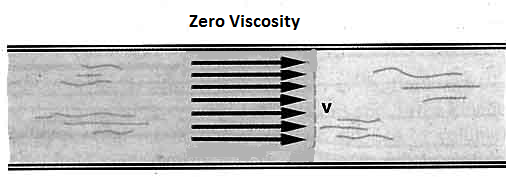In an intriguing cross-disciplinary study, scientists at the University of Paris have managed to create a room temperature ‘superfluid’ by adding E. coli to water.
A superfluid, can be defined as a fluid with zero viscosity. Viscosity, or the thickness of a liquid/gas, dictates how easily it flows. Ketchup has a higher viscosity than water, for example, and flows more slowly.
But even water’s viscosity, though quite low, is not zero. Even air has a measurable viscosity- ‘air resistance’ is actually the viscosity of air acting upon objects in motion. If the viscosity of air was zero, a hammer and a feather dropped at the same height would hit the ground at the same time.
Thus, superfluids display phenomenally weird and potentially useful properties.
A true superfluid could be shipped across an entire country with next to no energy, as a simple push would keep it moving indefinitely. A container pushed through a tube filled with superfluid would behave similarly.
The problem was that until now, superfluids only existed at extremely low temperatures, limiting its practical or even research applications (superfluids can be used for simulations of quantum gravity, contributing to our understanding of the physical laws that govern our universe).
However, in an almost accidental series of findings, researchers have created a superfluid by adding bacteria to an otherwise ordinary liquid. This, intuitively, does not make sense.
According to Wikipedia, the viscosity of a fluid is a measure of its resistance to gradual deformation by shear stress or tensile stress. It may just be a fancy way of saying “viscosity=thickness of liquid” but by exploring this definition it is possible to understand how this research works.
Shear stress is stress applied across the surface of a material. When you plant your hand on the surface of a table and slide it across, you are applying a shear stress to the table.
Thus, a liquid flowing through a tube experiences shear stress in the form of contact between the walls of the tube and the liquid. The thicker the liquid, the heavier the stress experienced by the liquid. Viscosity=thickness=how much shear stress is experienced by a fluid.
This also means that the liquid closer to the edges of the tube travels more slowly, as it is experiencing more friction (shear stress, in this instance) the closer it is to the walls.

Liquids travel faster the closer they are to the centre of the tube. Liquids of higher viscosity (thicker liquids) travel more slowly because they experience a higher shear stress from the walls of the tube.
A liquid with zero viscosity would travel at the same speed through the tube, no matter how close the streams are to the walls of the tube.
Bacteria add another layer of complexity. Many bacteria, including E. Coli, swim by twirling an appendages called cilia and flagellum.
In 2014, a study was conducted on the effects of liquid flow on the health of bacteria. It was an important study- a lot of research on bacteria fails to take into account the huge variety of flow patterns in the environment. What we see in a lab is very different in nature, partially due to the fact that laboratory conditions typically involve a dish with completely stationary water.
When they placed bacteria in a tube of flowing water, they found that the bacteria congregated towards the edges of the tube. This makes sense- the edges are where the liquid flows more slowly, which means it is easier for bacteria to travel and find food. Plus, they have the option of adhering to the walls.
However they also found something else. The bacteria would often face the opposite direction of flow, swimming against the current in an effort to remain relatively stationary.
According to Newton’s Third Law of motion, every action has an equal and opposite reaction. A motorboat’s rotor not only drives the boat forward, it also drives the water backwards.
Bacteria move opposite to the water flow, pushing the water even faster. But they are also present at higher concentrations near the walls, where the water moves more slowly. The result is that they propel the slower streams until the speed matches that of the faster streams, effectively simulating zero viscosity.

The force provided by the bacteria exactly cancels out the force due to shear stress, rendering it zero
Of course, normally bacteria move towards sources of food, so the result cannot be seen unless the nutrients in the liquid are spread out perfectly.
This does limit its practical application. There are many transportable liquids that are inhospitable to bacteria. However it is a good idea for superfluid simulations where cooling helium to near-absolute-zero temperatures is impractical.
Science in this day and age is less romantic than it has been in the past, where discoveries were made via “Eureka!” moments or completely by accident. It is much more methodical, building up on previous research in a systematic fashion.
Yet this study recaptures some of the out-of-the-box imagination that spawned some of the great theories of old. It shows that when one combines creative thinking with strict adherence to the scientific method, one can come up with something new, interesting, and useful. Expect to see more of this in the future.
Sources:
Lopez et al. (2015). Turning bacterial suspensions into a “superfluid”. Phys. Rev. Lett. 115, 028301, retrieved from http://arxiv.org/abs/1503.05511.
Rusconi et al. (2014). Bacterial transport suppressed by fluid shear. Nature Physics 10, 212–217, retrieved from http://www.nature.com/nphys/journal/v10/n3/full/nphys2883.html
Image of shear stress retrieved from http://gsa.state.al.us/gsa/geologichazards/Quakes_files/image006.jpg
Image of viscosity through a tube retrieved from http://digilander.libero.it/mfinotes/IVEuropeo/fluido2/lowhigh.jpg
Image of flagellum/cilia retrieved from https://upload.wikimedia.org/wikipedia/commons/thumb/a/a7/Flagellum-beating.svg/2000px-Flagellum-beating.svg.png
Image of motorboat retrieved from https://upload.wikimedia.org/wikipedia/commons/d/d3/Lazzara_80_Sky_Lounge_enclosed_bridge_photo_D_Ramey_Logan.jpg



